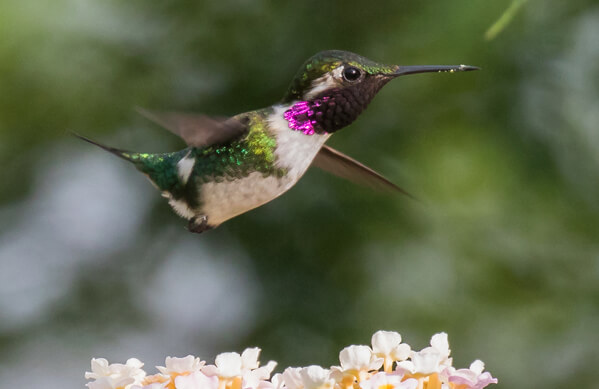 The Esmeraldas Woodstar is one of the world's rarest and smallest hummingbirds, measuring barely 2½ inches long. It's barely bigger than a bumblebee and lighter than a dollar bill!
The Esmeraldas Woodstar is one of the world's rarest and smallest hummingbirds, measuring barely 2½ inches long. It's barely bigger than a bumblebee and lighter than a dollar bill!
Called “Estrellita” (little star) by local people, this tiny bird is a big conservation concern. Fewer than 1,000 individuals are thought to remain, making the Esmeraldas Woodstar an urgent conservation priority.
Streamside Hummingbird
The woodstar breeds at lower elevations along streams next to large forest patches; most birds move upslope to spend the non-breeding season at higher elevations. Unfortunately, its range has been severely fragmented by human activities, and only 5 percent of original forest remains in western Ecuador due to logging, development, agriculture, and overgrazing.
Although part of its range occurs in Machalilla National Park, this provides inadequate protection, since the bird breeds at lower elevations beyond park boundaries.
Protection for Esmeraldas Woodstar
In 2014, the Esmeraldas Woodstar received additional protection from a new 38-acre reserve established by Fundación Jocotoco, Rainforest Trust, and ABC, with the involvement of the local Las Tunas community. These organizations plan to purchase more properties, with a long-term goal to protect 600 to 700 acres of habitat for the woodstar and other species found nowhere else.
Local people also play a big role in this hummingbird's protection. For example, community trash cleanup days have become a regular event around the Ayampe Reserve, particularly along the beaches where plastic waste is washed ashore. The “Children of the Sea” Recycling Program was borne from these events and involves the school children of nearby Las Tunas.
Donate to support ABC's conservation mission!




















































